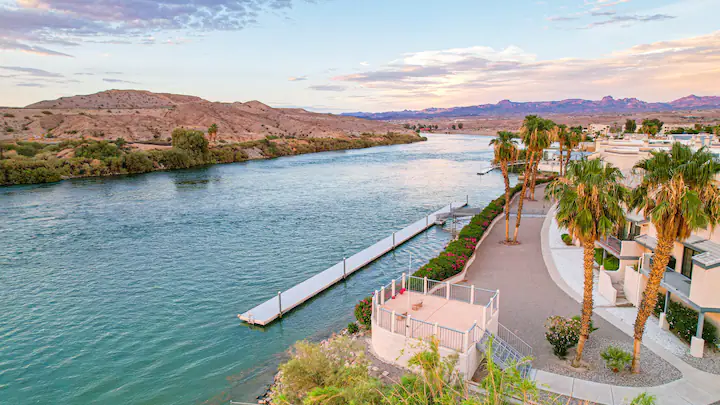In Mohave County, a community deeply rooted in its agricultural heritage and rural values, the significance of infrastructure development extends far beyond urban boundaries. This blog explores the critical role of modern infrastructure and manufacturing advancements in enhancing the economic stability and prosperity of Mohave County, particularly focusing on how these efforts resonate with a community that values tradition, independence, and hard work.
The Backbone of Rural Economic Expansion
For Mohave County’s approximately 200,000+ residents, infrastructure is not just about connectivity and transportation; it’s about sustaining the lifeblood of agricultural and rural communities. The decline in public non-defense net investment, as noted in “If You Build It: A Guide to the Economics of Infrastructure Investment,” presents a challenge but also an opportunity. Strategic investments in water management systems, roads, and digital infrastructure can significantly alleviate the hardships rural communities face, especially in terms of accessing markets, managing resources efficiently, and improving the quality of rural life.
Strengthening the Local Economy Through Manufacturing
The recent expansion of Taiwan Semiconductor Manufacturing Company (TSMC) in Arizona serves as a beacon of what is possible for rural areas like Mohave County. While TSMC’s development is state-wide, the principles behind such an investment — job creation, economic stimulation, and technological advancement — can be mirrored on a scale appropriate for Mohave County. The creation of high-paying, skilled jobs in manufacturing facilities can revitalize the local economy, providing not just employment but also fostering a skilled workforce that can diversify the economic landscape traditionally dominated by agriculture.
The Synergy Between Agriculture and Advanced Manufacturing
Integrating advanced manufacturing and infrastructure improvements in rural settings can offer numerous benefits, particularly for the agricultural sector. Modern infrastructure can lead to more efficient farming practices, better supply chain management, and reduced operational costs. This synergy not only enhances productivity but also ensures that the community remains economically viable and competitive in a global market. Moreover, the commitment to sustainable practices, as seen in TSMC’s installation of a water reclamation plant, can serve as a model for protecting Mohave County’s natural resources while supporting its economic ambitions.
Conclusion: A Vision for Sustainable Rural Prosperity
For the conservative, tradition-valuing residents of Mohave County, infrastructure and manufacturing developments are not just economic tools but are foundational to preserving and enhancing their way of life. By focusing on investments that align with the values of the community — such as sustainability, economic independence, and resilience — Mohave County can ensure that its rural character not only survives but thrives.
As Mohave County looks to the future, the lessons from broader Arizona’s infrastructural advancements provide a clear pathway for growth. Emphasizing strategic, sustainable development that supports both the agricultural backbone and potential manufacturing growth will help this community maintain its cherished rural identity while stepping confidently into a prosperous future. This balanced approach promises to safeguard the region’s heritage while paving the way for its economic resilience and sustainability.

